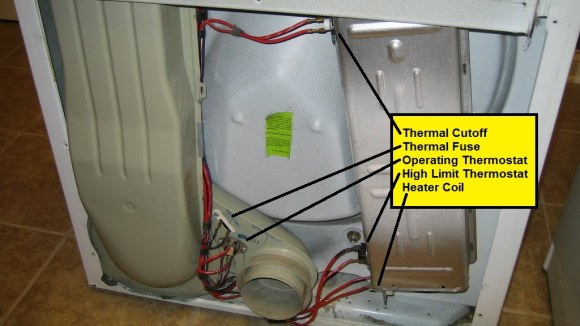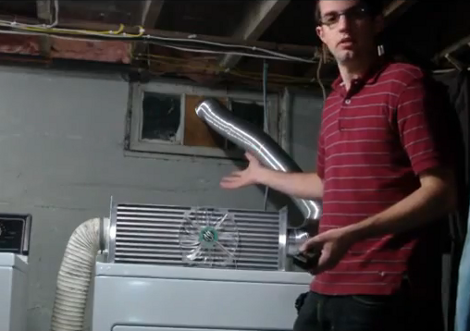
[How To Lou] sure has shown us how to do quite a few things. This time he’s dealing with an electric clothes dryer that won’t heat. We’ve been elbow deep in our own appliances and we think [Lou’s] matter-of-fact demonstration will help you gain the confidence to investigate problems before deciding if it’s a job to be relegated to the repair man.
This picture shows the back side of a clothes dryer after having a protective panel removed. Just out of frame is a functional schematic which lists each part and it’s resistance measurement. Lou has labelled those parts in this image to help us understand what we’re looking at. In the video after the break he begins doing the same troubleshooting that a repair would use. He grabbed his multimeter and used it to test the resistance of each component after removing the wires from it. All of them should read zero Ohms except for the heater coil which the schematic rates at 7.8-11.8 Ohms. The high limit thermostat is loose and measures an infinite resistance. This, coupled with the charred wire on one side is the culprit. As with that ice maker repair from yesterday, [Lou] searches for the numbers on the part to find the replacement he needs.
Continue reading “Electric Clothes Drier Repair Heats Things Up”











